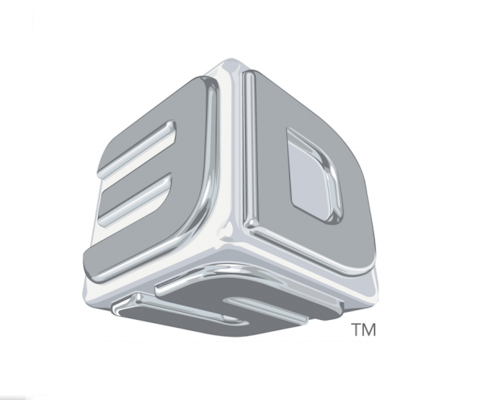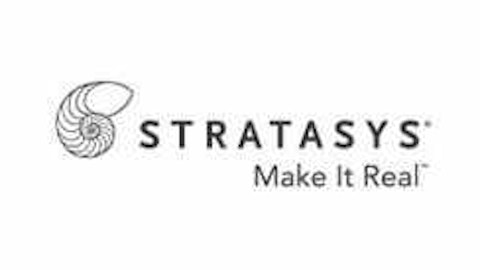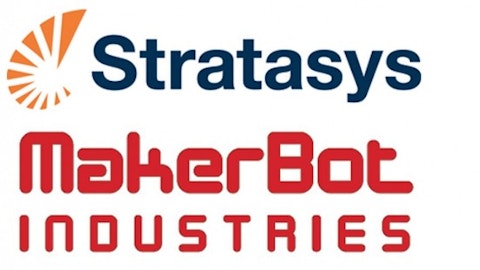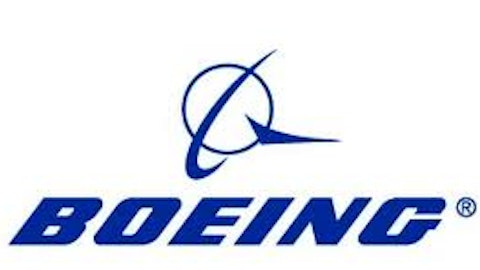The online retail behemoth Amazon.com, Inc. (NASDAQ:AMZN) has given a mainstream boost to the latest manufacturing revolution, 3-D printers, by launching a dedicated section for 3-D printers under its industrial and scientific department. In this section customers can shop for printers, printer filament, software, accessories, and books related to 3-D printing.
The office-supply store Staples, Inc. (NASDAQ:SPLS) is already selling 3D Systems Corporation (NYSE:DDD)’s consumer printer called Cube. Amazon, on other hand, is the official reseller of MakerBot Replicator 2 Desktop 3-D printer. Amazon, like others, believes that although the 3-D technology is exciting and looks promising, it still has a long way to go and requires the support of larger corporations.
The 3-D printing market is getting consolidated to two main firms: 3D Systems and Stratasys, Ltd. (NASDAQ:SSYS). Both of these were the top-performing stocks in 2012 with 3D Systems Corporation (NYSE:DDD) increasing by 270%, while Stratasys rose by 158% in the 12 months ending December 2012. This year, the growth of the two traditional 3-D stocks has been relatively modest, but a new entrant, ExOne (NASDAQ:XONE) is feeding the market’s appetite and its stock has risen by 93% this year.
Industrial applications and economic impact
Support for this industry now seems to be coming not only from Amazon but from other industrial powerhouses like General Electric and Ford Motors. 3-D printing is a far more efficient method – which translates into cost savings – as compared to conventional methods of cutting or drilling objects. In the future, Ford believes that customers will be able to print custom parts of their vehicles. Ford has been producing prototypes of brake rotors, rear axles and cylinder heads for test vehicles using 3-D printers for the last three decades. Similarly, General Electric plans to use 3-D printing in a variety of applications, ranging from fuel injectors for aircrafts to ultrasound probes used in hospitals. Others such as Mattel, Inc. (NASDAQ:MAT) have been using 3-D printers to make the parts of almost all of its toys including Max Steel, Barbie and Hot Wheels cars.
The Research firm Wohlers Associates has pointed out that the 3-D printing market is booming and registered a growth rate of 29.4% in 2011. In the next three years, it could achieve an average annual growth rate of 23%. Another well-known research firm, McKinsey’s, reports that by 2025, 3-D printing will have an annual economic impact of $230 to $550 billion due to reduction in costs and greater value of customized parts.
Increasing competition: 3D Systems vs. Stratasys
3D Systems is now expanding in different areas such as production, personal and professional segments, but broadly speaking, it mainly operates in the consumer area. Earlier this month 3D Systems Corporation (NYSE:DDD) acquired France-based Phoenix Systems, which specializes in direct metal laser sintering (DMLS) 3-D printers. Although the company hasn’t given any official figures, industry experts believe that 3D Systems would pay around $20 million for its 80% stake in the firm – this would put the Phoenix’s total value at $25 million. 3D Systems will also purchase the remaining 20% of shares in the near future.





